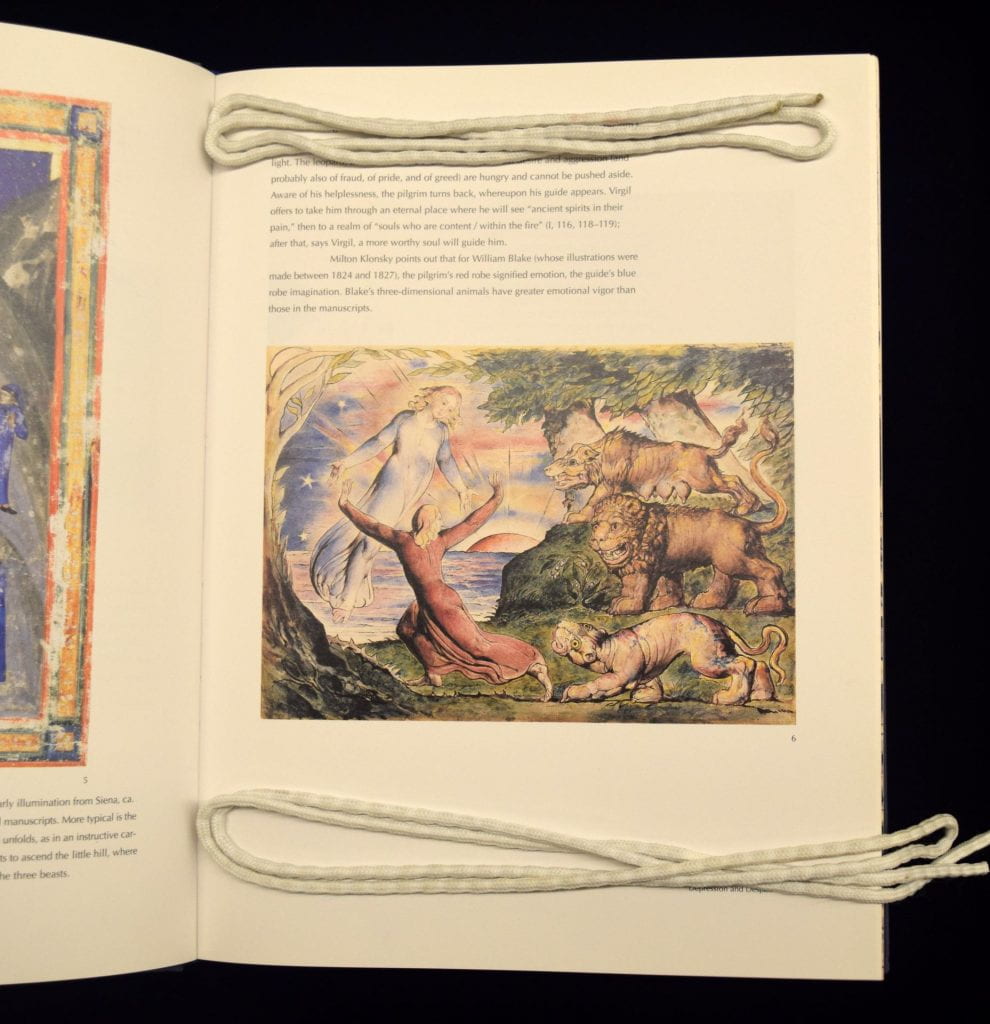Charles Taylor, Patricia Finley, Images of the Journey in Dante’s Divine Comedy. New Haven: Yale University Press, 1997.
Call number: PQ 4329 .T39 1977 (Main Library)
Case 1: “The Divine Comedy Between Texts and Images”
This collection of more than two hundred and fifty illustrations connected to the Divine Comedy span six centuries and is organized in three sections, one for each canticle of the poem. All illustrations are accompanied by short commentaries and twenty-six longer essays on selected representations.
The book vividly captures the different techniques and media used throughout the centuries, as well as the range of emotions, perspectives, and reflections that illustrators attempted to produce or transmit through their work, ranging from manuscript illuminations to contemporaneous illustrations. From faithful Botticelli to expressionist Guttuso, all artists have represented symbolic elements in the Divine Comedy in accordance with the cultural attitude of their time, namely in an attempt to offer their “interior vision of the divine” (p. xvi).
On the exhibited pages (pp. 12-13), you can observe two examples of illustrations for the introductory canto in Dante’s poem, the first from an illustrated Sienese fourteenth-century codex and the second from Blake’s series of illustrations of the Divine Comedy (see also the descriptions for The Note-Book of William Blake and Blake’s Illustrations in this exhibit). Much like the woodcut in the exhibited Opere del divino poeta Danthe, the illumination depicts Dante sleeping, Dante trying to ascend the mount of Purgatory, and Dante surrounded by the three beasts that stop him. Blake’s illustration represents the same scene with Dante running from the three beasts and a Christ-like Virgil floating in the air and ready to guide Dante in his journey to afterlife.

